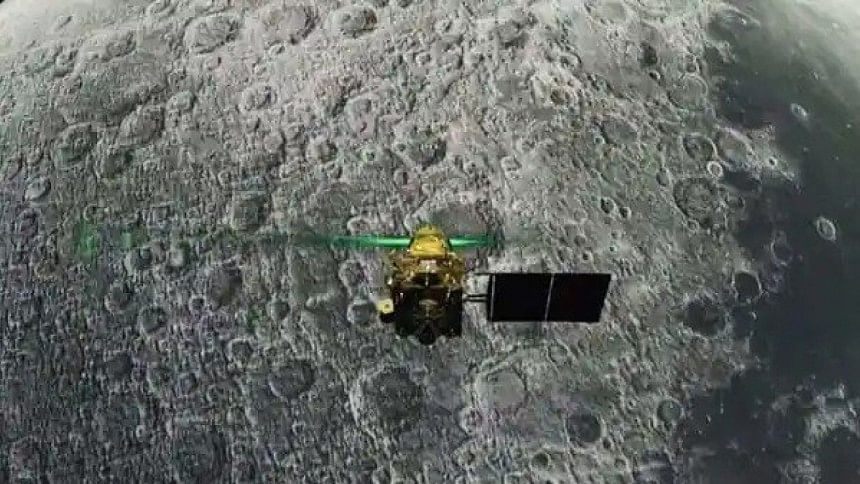India’s Chandrayaan-2 spectrometer maps abundance of sodium on moon for 1st time

The orbiter of India's second unmanned expedition to the moon has mapped an abundance of sodium on the lunar surface for the first time, the Indian Space Research Organization said.
In a recent work published in 'The Astrophysical Journal Letters', Chandrayaan-2 mapped the abundance of sodium on the moon for the very first-time using CLASS (Chandrayaan-2 Large Area Soft X-ray Spectrometer), the ISRO said in a statement last evening (October 7, 2022), reports our New Delhi correspondent.
"The X-ray spectrometer CLASS on the Chandrayaan-2 Orbiter has mapped the abundance of sodium on the moon for the first time," the national space agency said.
The rock and soil samples the US' Apollo 11 astronauts brought to the earth showed these regions which are remnants of an ancient lunar crust are mainly composed of silicate minerals in the group plagioclase feldspar series, according to the statement.
"While these are common minerals found on earth, lunar samples have a variety of the mineral that contain more of the element calcium than sodium (which is an alternative) following the general trend in compositional differences between earth and moon.
"A loss of volatile elements, including alkalis like sodium and potassium on moon, could be traced back to the time when earth and moon formed together in a solar system that was young and fiery," the ISRO said.
Sodium is one of those elements that do not have a tell-tale signature in the visible or near-infrared wavelengths and has thus not been targeted via remote sensing observations, it pointed out.
Built at the U R Rao Satellite Centre of ISRO in Bengaluru, CLASS provides clean signatures of the sodium line thanks to its high sensitivity and performance, said the statement.
The study finds that a part of the signal could be arising from a thin veneer of sodium atoms weakly bound to the lunar grains, it added
"Findings from Chandrayaan-2 suggest there are two kinds of sodium atoms on moon's surface, those that are loosely bound on the surface and those that are part of the minerals. External agents such as solar radiation liberate the loosely bound atoms more easily thus acting as a source of the atoms in the lunar exosphere," said the ISRO.
Ground telescopes have taken images of faint sodium glow around moon, which is just the color of light emitted by a sodium vapor lamp, according to ISRO.
What has been elusive is the source of these atoms on moon's surface, the ISRO said adding the new findings from Chandrayaan-2 provide an avenue to study surface-exosphere interaction on moon, which would help development of similar models for mercury and other airless bodies in the solar system and beyond.

 For all latest news, follow The Daily Star's Google News channel.
For all latest news, follow The Daily Star's Google News channel. 



Comments